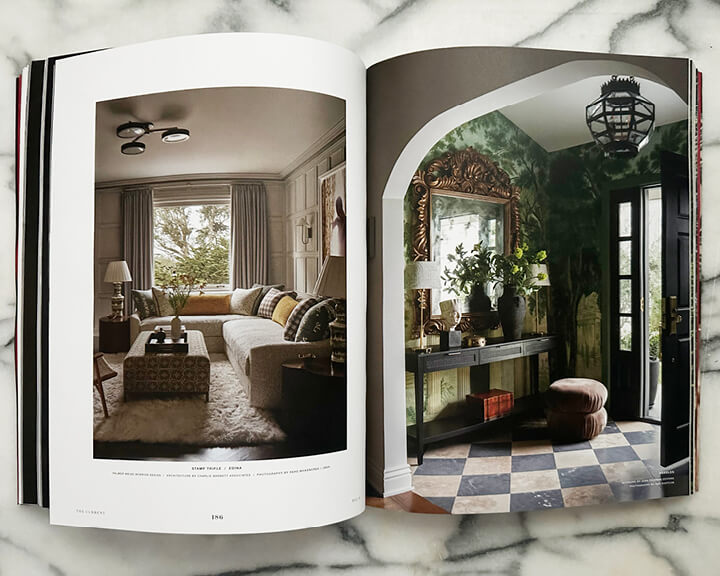Which Interior Design Books are Actually Good?
A roundup of the best new interior design books of 2025, featuring Jeffrey Alan Marks, Peter Dunham, Pam Shamshiri, and more—plus highlights from Design Los Angeles.
Lately, I’ve been posting all things Los Angeles—places to eat, spots to browse, standout interiors showrooms, notable historic homes, and a few visits to homes by Schindler and Frank Lloyd Wright. But this post shifts from buildings, boutiques, and restaurants… to the people. Specifically, the people I met during a week of panels and presentations at Design Los Angeles—and more importantly, the books they brought with them.
At nearly every event, the designers on stage were launching a new publication: Jeffrey Alan Marks, Peter Dunham, Pam Shamshiri, Dave Dawson (CEO of The Urban Electric Co.), and Simon B. Mørch. All high-level professionals with demanding schedules, presenting years of work in one beautifully bound object. A design book—or magazine—is no side project.
Naturally, I buy the books. These designers are growing their brands, generating buzz, and getting their work into the world—good for them, and let’s be real… total goals. I came home to Boston in May 2025 with four new titles and two 300+ page magazines (int the carry-on!). What can I say—I love print.
A few are recent releases. Two have been out for a bit, but I finally followed through after letting them sit in my Amazon cart longer than I’d like to admit. So here we are: four very different, but equally beautiful, design books—and two not-your-standard magazines. One being a self-published print piece from The Urban Electric Co., as thoughtful and well-designed as their lighting. The other is Scenery from Mørch, a biannual magazine exploring interiors, photography, and visual storytelling with a cinematic, emotionally driven lens.
The Art of Gracie: The History of Hand-Painted Wallpaper
Meeting the Gracie family and team was unforgettable—especially because I met Taki, one of their master painters. He’s based in New York and carries on the tradition of hand-painted wallpaper. Many painters learn from their fathers, who learned from theirs—a legacy passed down, just like the Gracie business itself. Founded in 1898, it’s still family-owned and run. As for the paper, every panel is painted by hand, and during a live demonstration, Taki walked us through his process, brushstroke by brushstroke – he literally uses two brushes in one hand. (Read/See more in my LA design showroom post from May 2025.)
This book itself is a love letter to the centuries-old tradition of hand-painted wallpaper. It explores Gracie’s archives, designer collaborations, and the evolution of chinoiserie in contemporary interiors. Every page features extraordinary rooms—from quiet studies to dramatic dining spaces—wrapped in scenic, floral, or bird-filled murals. The craftsmanship is front and center, but it never feels stiff; if you love design with soul, this one’s a must.
My favorite spread features the custom panels that feel colonial without being too literal. Even without reading the caption, I recognized one of the scenes as New England—specifically Nantucket. It shows two versions of Nantucket Harbor in different colorways. The artwork is based on a decades-old design originally created for a restoration project on Main Street.
Pick up a copy to see more of the beauty inside. And if the wallpaper itself is out of reach—which it is for most people—the collaborations make it more accessible. I especially liked the one with Aerin Lauder; candles, serving trays or a travel bags.
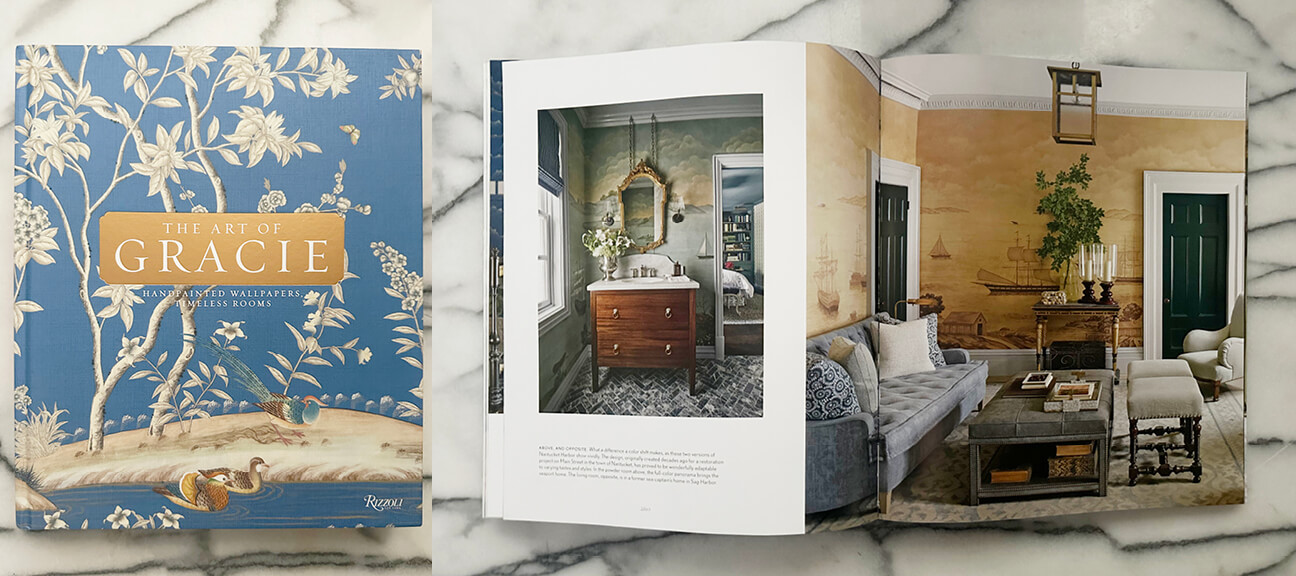
This Is Home by Jeffrey Alan Marks
This is his second book. Let’s start with the obvious—Jeffrey (Jeff?) is extremely handsome and impeccably dressed…. how an interior designer should look. The book channels West Coast ease—effortless, airy, and livable. His style is relaxed but refined: linen sofas, weathered woods, vintage lighting, and sun-washed tones. It balances modern and traditional, with playful color and quiet confidence.
A summer home in Aspen caught my eye—checkerboard floors, Venetian plaster walls, and a mix of Swedish antiques with newly designed pieces. It felt fresh and aged at the same time. Pick up the book as a reminder that laid-back design can still be beautifully precise.
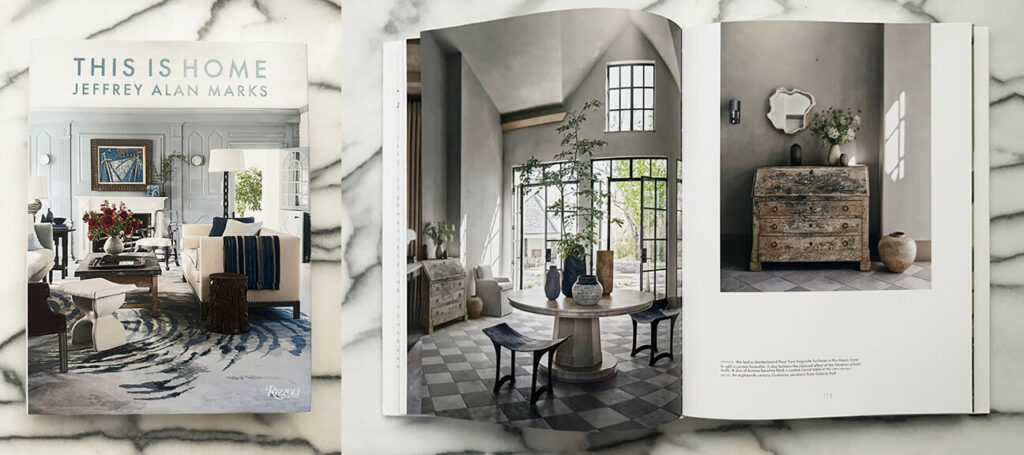
The World of Peter Dunham
Peter Dunham is lovely—that’s really the best word for him. Talented, funny, warm—but “lovely” sums it up just right. He signed my copy as I browsed his showroom—which, as it happens, looks like it’s straight out of the book.
This book reads like a well-stamped passport. It travels from Tangier to Paris to Palm Beach, each stop layered with pattern, history, and a little glamour. Vintage suzani drapery hangs next to English club chairs. Tropical rattan meets neoclassical lines. His rooms feel collected, not decorated. There’s warmth in every page, and a real sense of time.
I stopped at a bedroom with a canopy bed, surrounded by soft grey linen walls and decorated with five different prints. On the opposite page, a close-up showing textiles from Dunham’s own fabric line—the Oona print—along with alternate colorways.
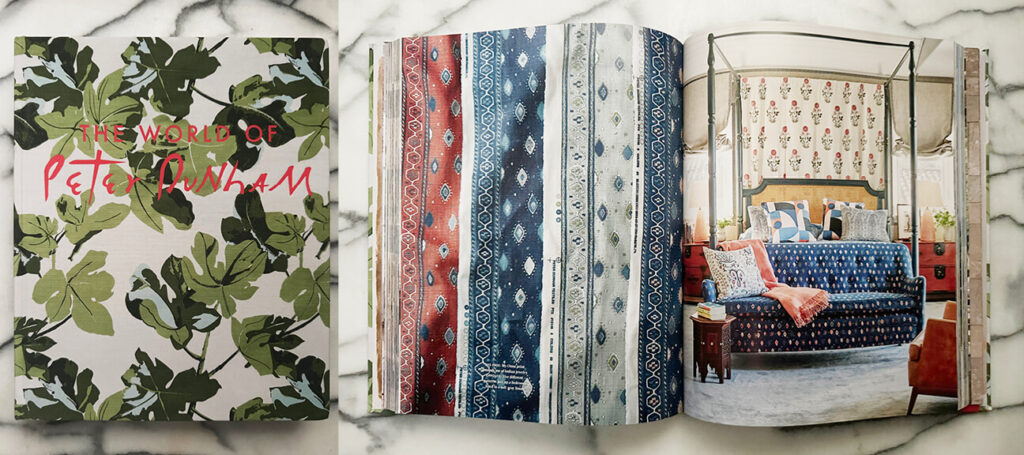
Narrative Interiors: Pam Shamshiri
This one’s the coolest—not necessarily the best, but definitely the coolest. Pam Shamshiri’s work leans more conceptual. The other three books are more traditional; this one is moody, cerebral, and cinematic. I felt a little embarrassed that I didn’t know more about her before this trip.
Pam’s interiors have tension. Old beams meet mirrored walls. Modern art hangs over textured plaster. Her projects are soulful and restrained. Beyond just a collection of pretty rooms, it’s a whole philosophy about how space should make you feel. This book that challenges the you to think differently about space.
I had the chance to hear Pam speak during a discussion with Mayer Rus, West Coast editor of Architectural Digest. The talk, titled “Time, Space, and Storytelling: A New Lens for Interior Design”, focused on how the history of a home guides her design process. Pam leans into narrative, she treats historic houses with care—sreferring to herself (and her clients) as stewards of the past. One spread caught my eye. Not just because no one does a circular kitchen, but because I recognized the project; the living room from the same home is featured on the cover of her 2023 book.
The Smalley House, located in Holmby Hills, Los Angeles, is one of A. Quincy Jones’s most ambitious residential projects from the late sixties. He designed it for close friends—the Smalley family. The 7,500-square-foot split-level home includes signature Jones elements: post-and-beam construction, soaring 25-foot ceilings, and expansive glass walls that draw the gardens inside. This home reframed how I think about modernism—beyond my visits to Schindler and Frank Lloyd Wright houses—and it cemented Pam Shamshiri’s place on the AD100 list.
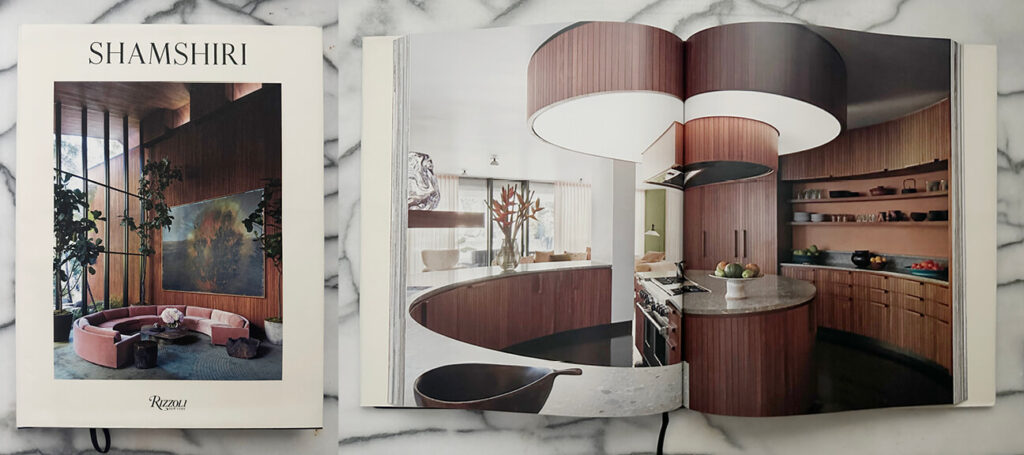
The Current: Urban Electric Co’s Design Journal, Volume 6
I hadn’t known much about The Current until I sat down for a conversation featuring Dave Dawson, founder of The Urban Electric Co. Instead of following the usual advertising model—paying for space in the big-name shelter magazines—Dave took a risk. Forget the traditional ads, focus on a self-published design journal. (Yes, I took inspiration from this.)
Of course, you’ll find plenty of photos of his signature light fixtures—classic, modern, unmistakably his. But there’s more. The Current goes behind the scenes, highlighting the craftsmen and artists (and yes, their tattoos) who bring these fixtures to life. The latest issue includes a tribute to the late interior decorator Robert Kime, one piece written from the perspective of his former assistant. Another dives into the architecture of an old church. There’s even a thoughtful exploration of the ceremonial aspects of Japanese tea. Part culture, part craft—The Current is an unexpected and beautifully made journal worth spending time with.
I paused for two cool photos featuring two very different light fixtures. One was modern—the Stamp Triple flushmount, room designed by Palmer Weiss. The other fixture more traditional—the Needles Hang, featured in a space by Jenn Feldman Designs. Moody.
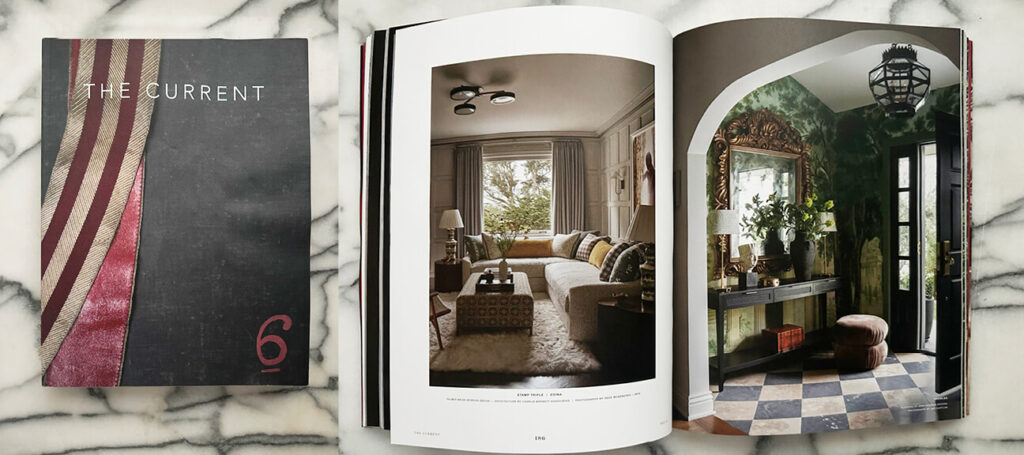
Scenery: Not Your Average Shelter Mag
During that same conversation—where Dave Dawson spoke about The Current—I also learned about Simon B. Mørch, editor-in-chief of Scenery. With the New York Times Style Magazine interiors editor Tom Delevan moderating, you knew it was going to be a great chat.
Scenery is a magazine devoted to interiors and curiosities—not your typical shelter publication. It leans into visual storytelling with a strong editorial point of view, drawing from set design, styling, and atmosphere, which feels right at home in LA. I heard both Dave and Simon speak about their respective publications during the same panel. The takeaway? Ditch the conventional rules.
Scenery blends photography, travel, interiors, and people. It succeeds at bringing emotion into every page. I have issue Number Two, Cover Four – no longer available (but linking anyways). The lighting drew me in—it was hard to focus, which made it more compelling. You had to squint to catch the details—no obvious reveal, and that worked. Opposite the spread, the styling caught me: messy plates, empty mugs, breakfast long over. One table set, the other bare. Perfectly imperfect, and a masterclass in restraint.
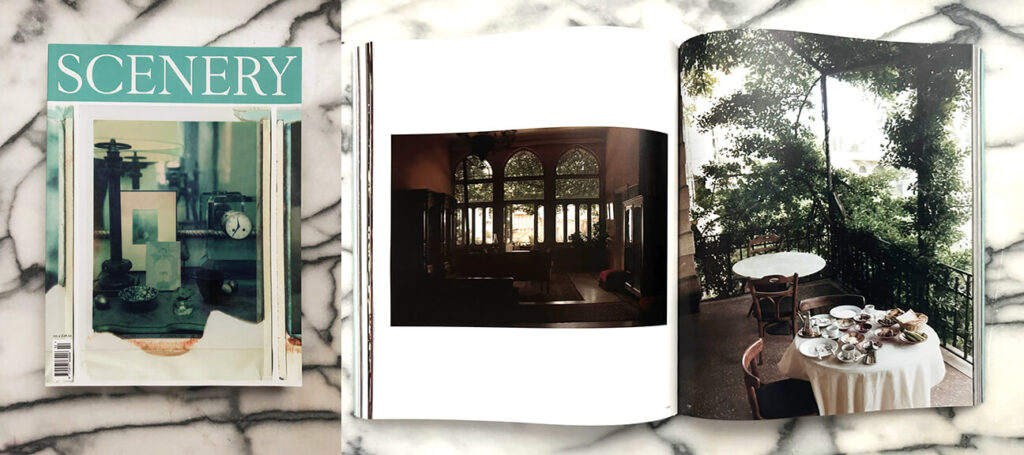
Best Interior Design Books: Summer 2025
These books work well as coffee table pieces for clients, but for designers, they’re pure fuel. Most of the photos aren’t online. You may not find them on Pinterest or on the designer’s websites. That’s the point. You’re meant to sit with them—turn the pages, look closely, return to them later.
It’s worth it—especially for someone like me. I go back to my shelves often at the beginning of a project. Now that I’ve seen these designers speak and heard how they think about their work, the books feel even more meaningful. Whether you’re gifting one to a client, starting your own collection, or just in need of fresh ideas, these are some of the best interior design books to add to your library this year.
